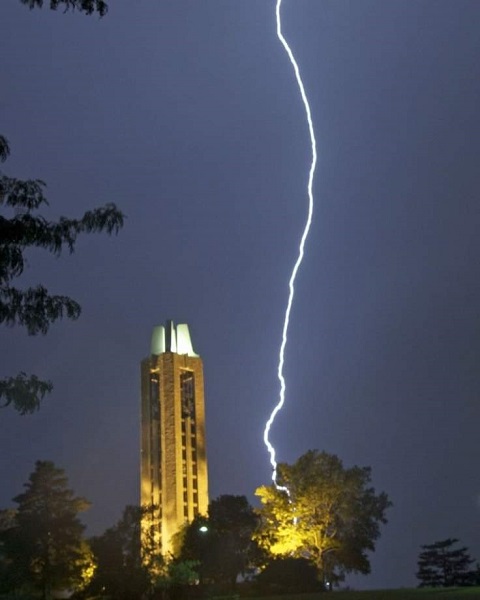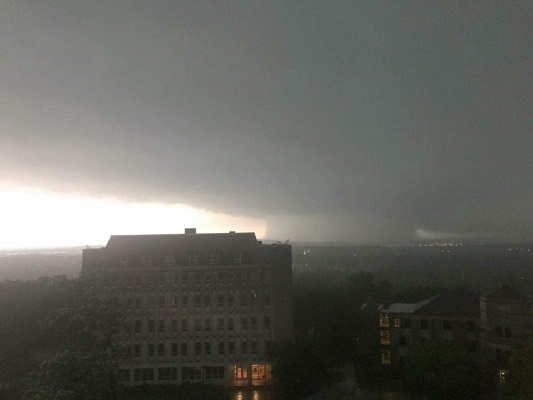KU-EHS April Safety Tip: Tornado and Severe Weather Preparedness

Severe Weather Safety
Each person has a role to play in preparedness. Here are several ways to prepare yourself and your family for severe weather season.
Develop Your Plan
We encourage everyone to create a personal severe weather plan before severe weather strikes, so you are alerted and know what to do.
Here are the key parts of your severe weather plan:
- Identify how to receive alerts
- Identify where you will take cover
- Build a basic emergency kit
More Severe Weather Information

Tornado Safety and Awareness
Understanding how to receive severe weather alerts and the appropriate steps to take when those alerts are received is an important part of being prepared. Emergency Management recommends using more than one method to receive severe weather alerts.
Below are several ways to receive weather alerts.
- Weather Radios
- Local Media Outlets
- Wireless Emergency Alerts
- Social Media
Where to Go When a Warning is Issued
When the outdoor warning sirens sound or when you receive a Warning, take the following safety precautions:
- In a home or building:
- Move to a designated shelter (as determined by the facility or installed in your home), such as a basement or installed saferoom.
- If a basement is not available, move to an interior room or hallway on the lowest floor and get under a sturdy piece of furniture.
- Use your arms or a helmet to cover your head and neck to protect against flying debris.
- Stay away from windows.
- In a vehicle
- Do not try to outrun a tornado. Abandon the vehicle, and take cover in a nearby structure or building following the guidelines above.
- If a suitable structure is not available, either get down in your car and cover your head, or abandon your car and seek shelter in a low lying area such as a ditch or ravine.
- Mobile homes
- Even if tied down, offer little protection from tornadoes and should be abandoned.
- If severe weather is possible, see about staying with a friend or if your park has a shelter available.
- Apartments:
- If on an upper floor, see if a neighbor below is available to assist you or if the complex has a ground level or basement facility available.
- Otherwise, go to and interior room on the lowest level possible.
- Use your arms or a helmet to cover your head and neck to protect against flying debris.
You may not always be in a familiar place when severe weather strikes. Any time severe weather is possible, use the information above to identify or ask the building manager where to find the best shelter in your location.
Douglas County does not have community tornado shelters. Some community members use open public buildings as their shelter. Call ahead before the severe weather event to determine the hours of operation for any location you plan to use. Do not assume that location will be open. This could be very dangerous. If you plan to leave your home, give yourself plenty of time to get to your shelter location.